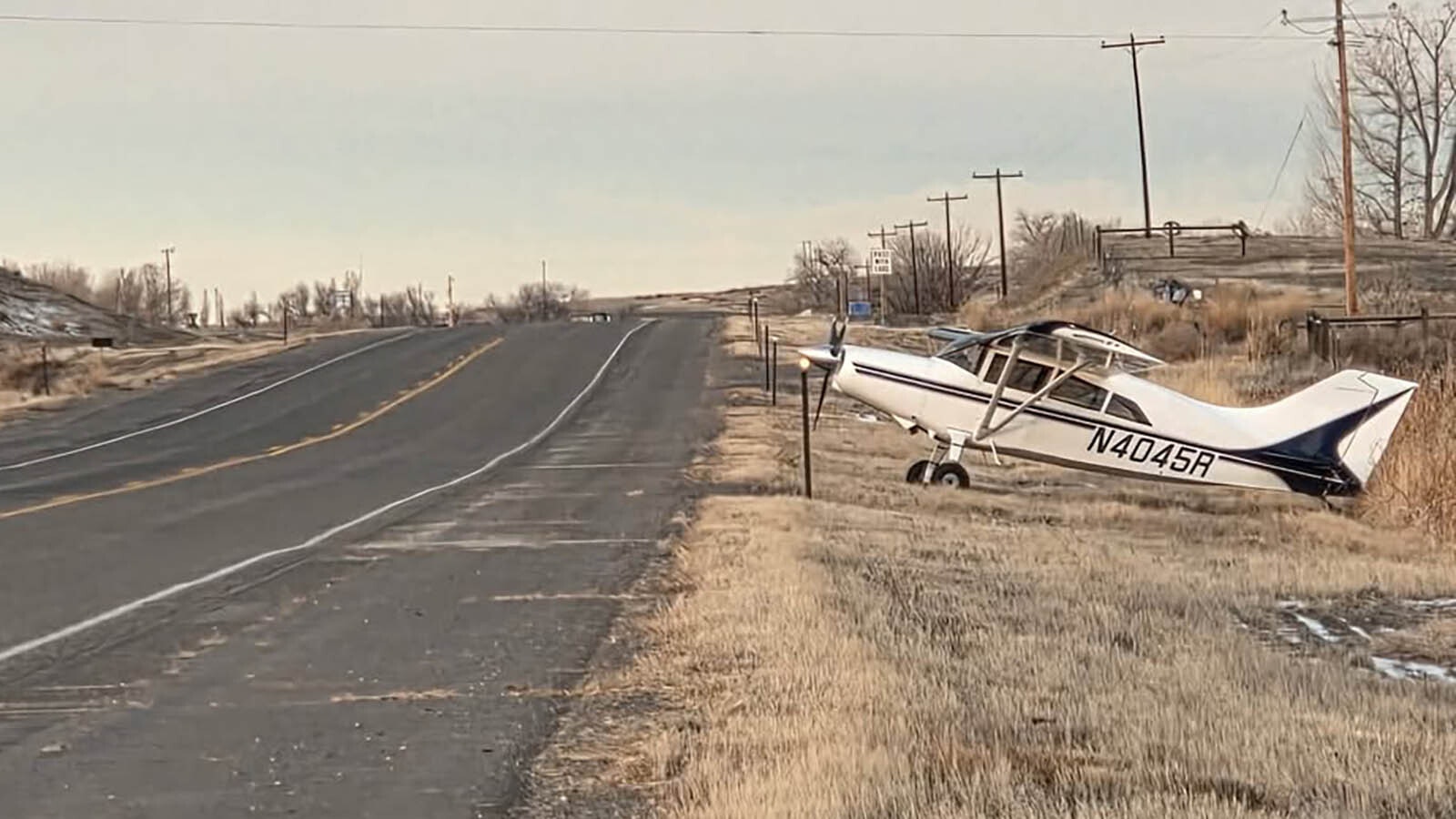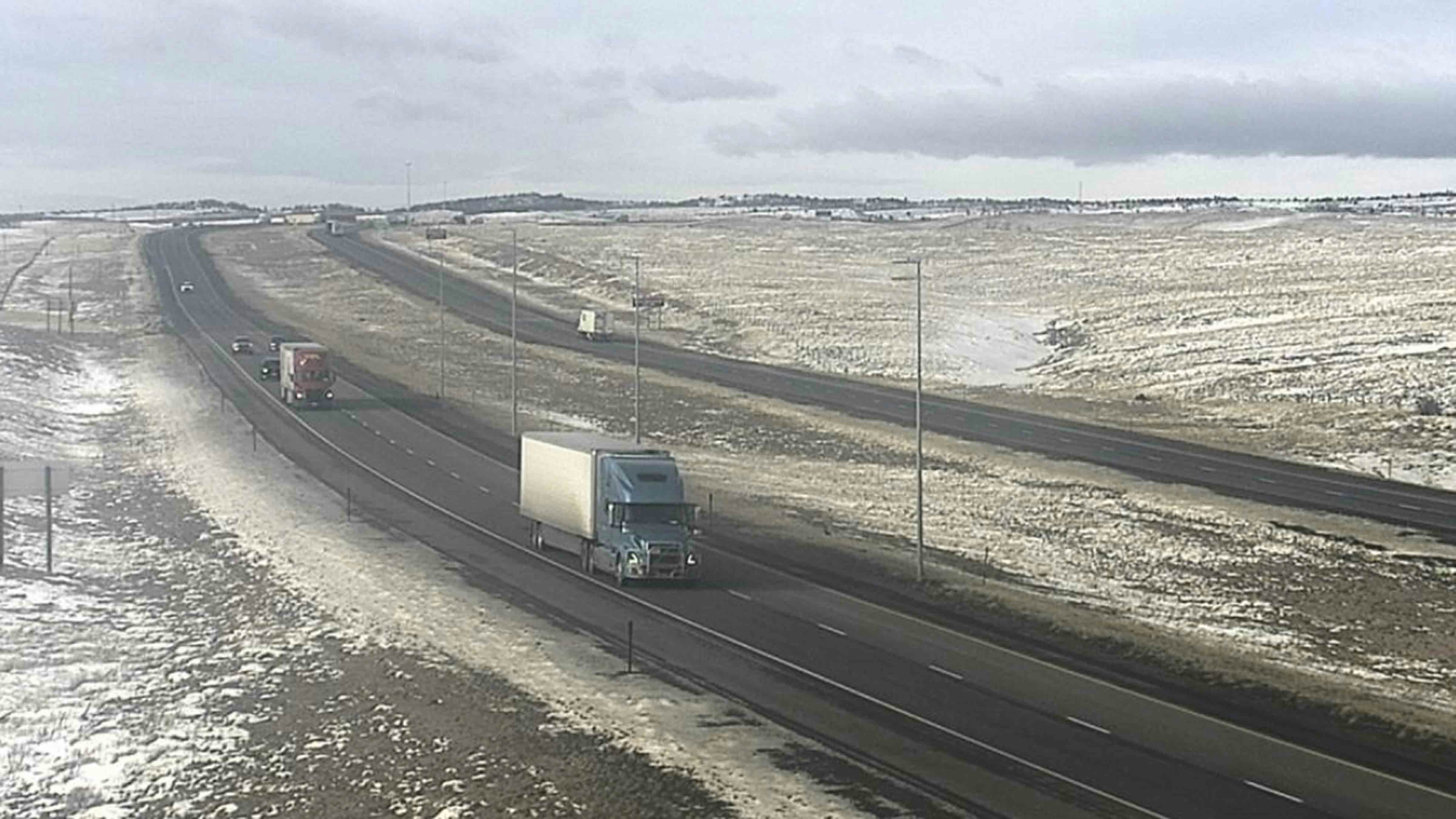The Museum of Flight and Aerial Firefighting moved its biggest acquisition yet to its collection of vintage airplanes at the U.S. Highway 14 rest area near Greybull, Wyoming.
Tanker 97, a Boeing KC-97 Stratofreighter, joined seven other vintage airplanes that previously served as aerial firefighters throughout the United States.
Bob Hawkins, the museum's owner and operator, said the 153,000-pound Tanker 97 has immediately become the crown jewel of the museum’s collection.
“We’re very happy to have acquired this aircraft,” he said. “We’re trying to preserve the history of aerial firefighting, and this is a big piece of that history.”
Big Boeing
The KC-97 Stratofreighter is a four-engine tanker aircraft manufactured by Boeing for aerial refueling. It has four 3,500-horsepower engines, a maximum speed of 400 mph and a wingspan of just over 141 feet.
Boeing manufactured 811 KC-97s between 1951 and 1956. The aircraft was succeeded by the Boeing MC-135 Stratotanker, some of which are still in U.S. Air Force service today.
Hawkins and Powers Aviation purchased and repurposed KC-97s for aerial firefighting. It was the largest aircraft the Greybull company used to fight wildfires in Wyoming and across the U.S.
“This one spent 20 years fighting fires in Alaska,” he said. “It had a 4,000-gallon capacity.”
The Berlin Airlift Historical Foundation, founded in 1988, donated Tanker 97 to the Museum of Flight and Aerial Firefighting. The foundation is dedicated to preserving aircraft that participated in the Berlin Airlift between April 1948 and May 1949.
The Berlin Airlift Historical Foundation donated the aircraft after salvaging one of its engines for one of the only airworthy KC-97s. According to Hawkins, it was an eye-for-an-eye exchange.
“They needed the engine because they have a KC-97 that they still fly,” he said, “but in doing that, we made sure that we got another engine and prop so we had a complete plane. Before that, Tanker 97 could have probably very easily flown again. It was still considered a viable airplane.”
Flight viability isn’t a concern for the museum’s aircraft since they’re supposed to remain accessible to visitors on the ground. However, getting the KC-97 to its new home was no flight of fancy.
Moving Day
The museum acquired Tanker 97 over a year ago but couldn’t move it to the museum grounds until this month. It sat on the pavement of the South Big Horn County Airport until Greybull got cold enough.
When the ground was thoroughly frozen, a bulldozer towed the 153,000-pound aircraft from the airport to the museum.
“We were going to try to move it last year, but it warmed up too quickly,” Hawkins said. “We wanted the ground to be frozen, so it didn’t sink into the ground while we were moving it.”
After filling a flat tire, the KC-97 moved along a runway for the final time before it took a brief off-road excursion to its final landing site. It’s the largest aircraft at the museum, making it the most visible to anyone driving U.S. Highway 14.
Huge History
When Boeing replaced the KC-97 with the KC-135 jet tanker, the remaining aircraft were sold or scrapped. Many got a second life fighting wildfires when they retired from the U.S.’s fighting forces.
All eight aircraft at the Museum of Flight and Aerial Firefighting were built for the military and converted to carry immense amounts of water or fire suppressants for battling wildfires. Many were in widespread use during the 1988 wildfires in Yellowstone National Park.
“Greybull was an important base for the ’88 firefighting effort,” Hawkins said. “There was a lot less traffic here than in Billings. These planes worked a lot of hours putting out a lot of forest fires.”
KC-97s were widely used for firefighting into the 21st Century but eventually became obsolete. The future of aerial firefighting was in former commercial airliners with jets, rather than World War II-era prop planes.
“These planes were easy and cheap to acquire and convert into air tankers,” Hawkins said. “That thought process has changed, and now most people would rather go with the ex-airline aircraft.”
The Museum of Flight and Aerial Firefighting was founded to preserve these machines of warfare and firefighting. Hawkins and many others see the significance of their history and are intimately acquainted with the story behind every plane on the grounds.
“A lot of people like World War II aircraft, and a lot of people have been in the firefighting business, worked with aircraft on fires, and want to see what the planes are like,” Hawkins said.
Open Eventually
While the Museum of Flight and Aerial Firefighting is open year-round, its newest acquisition will probably be for the eyes only. Until the cabin is empty, no one will be allowed onboard.
Most of the aircraft at the museum are accessible to museum visitors. They’re allowed to step inside and see the inner workings of the firefighting aircraft while learning about the equipment and personnel they carried during the important work.
Tanker 97 will eventually be accessible to the public but needs some work. Hawkins estimates that it probably won’t be a full-fledged exhibit until 2026.
“The Berlin Airlift Historical Foundation had some stuff stored in it, and they’ll have to come collect it before we can work on it,” he said. “We’d eventually like to let people inside it, but I doubt that will happen this summer.”
In the meantime, Tanker 97 is already drawing more attention to the U.S. 14 Rest Area. Hawkins said visitor traffic has steadily increased over the last few years, and he expects their Boeing KC-97 Stratofreighter to make the museum even more alluring to passersby.
So, is the collection complete? Hawkins would like to acquire one more aircraft, but he doesn’t know if any of them still exist.
“It would be fun to end up with one of the Lockheed C-130 Hercules out there, but I don’t think there’s any of them out there that are completely together,” he said. “They’re all in parts in boneyards across the country.”
That scarcity probably means Tanker 97 will remain the crown jewel of the museum’s collection of historical aircraft. Hawkins repeatedly expressed his excitement that the massive firefighting aircraft finally found a home in Greybull.
“This is just about as good as it gets,” he said. “It’s a fantastic find and a good fit for us.”
Contact Andrew Rossi at arossi@cowboystatedaily.com
Andrew Rossi can be reached at arossi@cowboystatedaily.com.









